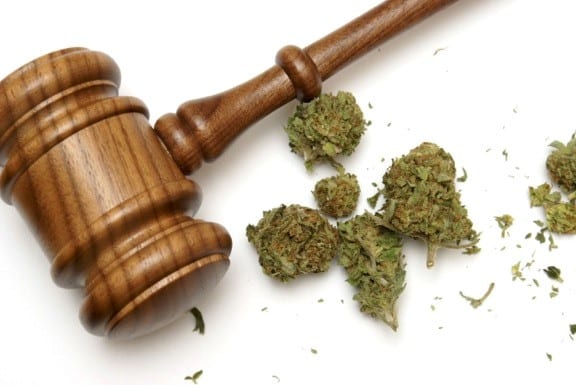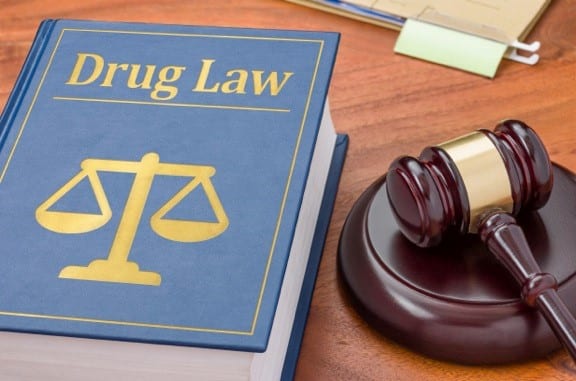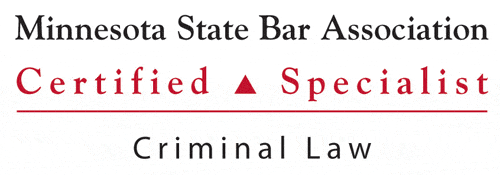
If you are arrested for a drug crime, you may be surprised by the charge that you actually end up facing. Depending on the weight of the drugs allegedly involved and the other circumstances, you may face more jail time and a higher charge.
For example, even if you are not caught in a sale, the weight of drugs involved could bump up your charge to a sale (or even trafficking) offense.
So how are drug crimes defined in Minnesota? We’ve got a basic guide for you.
Legal Definitions of Different Minnesota Drug Crimes

The most common charges under Minnesota state law are possession, sale and trafficking.
Possession – Simply holding drugs is considered possession. However, larger amounts of certain drugs may result in a harsher charge if law enforcement believes you had the intention to sell the drugs you had in your possession.
Sale – Often called distribution charges, sale is the act of moving or transferring drugs for money, goods, or services.
Trafficking – This is where many people get confused. While trafficking is often defined as the movement of drugs, drug trafficking is determined by the weight of drugs that were involved.
Different Degrees of Sale and Possession
There are five degrees of both sale of a controlled substance and possession of a controlled substance. The seriousness and the degrees of the crimes are determined by the drugs’ weight and the type of drugs that are involved. All of these crimes are considered felony offenses.
Fifth Degree (Sale):
Any amount of marijuana or Schedule IV drugs
Fifth Degree (Possession):
Any amount of Schedule I, II, III, or IV drugs (except small amounts of marijuana)
Fourth Degree (Sale):
Sale of any amount of Schedule I, II, or III drug (except marijuana)
Sale of or conspiracy to sell any Schedule IV or V drug to minors
Sale of marijuana in a school zone, park zone, public housing zone, or drug treatment center
Fourth Degree (Possession):
10+ doses of hallucinogens, or any amount of Schedule I, II, or III drug (except marijuana) with the intention to sell
Third Degree (Sale):
5+ kilos of marijuana, 10+ doses of hallucinogens, or any amount of narcotic drugs
Sale of or conspiracy to sell Schedule I, II, III (not Schedule I or II narcotic drugs) to minors
Third Degree (Possession):
3+ grams of cocaine, heroin, or methamphetamines, 10+ other narcotic drugs, or 10+ kilos of marijuana
Possession of any narcotic drug, methamphetamine, or 5+ doses of LSD in a school zone, park zone, public housing zone, or drug treatment facility
Second Degree (Sale):
3+ grams of heroin, cocaine, or methamphetamines, 10+ grams of other narcotic drugs, 50+ doses of hallucinogens, or 25+ kilos of marijuana
Sale of Schedule I or II narcotic drugs to minors
Sale of Schedule I or II narcotic drugs in a school zone, park zone, public housing zone, or drug treatment center
Second Degree (Possession):
6+ grams of cocaine, heroin, or methamphetamines, 100+ doses of hallucinogens, 50+ grams of other narcotic drugs, 50+ kilos of marijuana, or 100+ marijuana plants
First Degree (Sale):
10+ grams of cocaine, heroin, or methamphetamines, 200+ doses of hallucinogens, 50+ kilos of marijuana, or 50+ grams of other narcotic drugs
Sale of 25+ kilos of marijuana in a school zone, park zone, public housing zone, or drug treatment facility
First Degree (Possession):
25+ grams of cocaine, heroin or methamphetamines, 500+ grams of other narcotic drugs, 100 kilos of marijuana, or 500+ doses of hallucinogens
First degree possession is also regarded as drug trafficking.
Penalties for Controlled Substance Crimes

The penalties for the different degrees of drug crimes have recently changed. Now, first-time offenders for low-level crimes will only face gross misdemeanor charges. However, second-time and subsequent offenders may still face felony charges and multiple years in jail. Penalties for different crimes include:
Fifth and Fourth Degree (for first offenders facing gross misdemeanor charges): up to one year in jail and/or $3,000 in fines
Fifth Degree: up to 5 years in prison and/or $10,000 in fines
Fourth Degree: up to 15 years in prison and/or $100,000 in fines
Third Degree: up to 20 years in prison and/or $250,000 in fines
Second Degree: up to 25 years in prison and/or $500,000 in fines
First Degree: up to 30 years in prison (minimum of 65 months) and/or $1 million in fines
If aggravating factors are present for first degree controlled substance crimes, you will face a minimum of 86 months in prison.
These are just the penalties under state law. If you are caught trafficking large amounts of drugs over state or federal borders, you may face federal charges. Federal court has more severe consequences, including mandatory minimums for a wider range of drug offenses.
You may also face state and federal charges at the same time, which dramatically increases the amount of evidence against you and the potential you face for serving years (or decades) in jail.
Misdemeanor Drug Offenses
Possessing small amounts of marijuana for personal use is a misdemeanor offense in Minnesota. Possession of drug paraphernalia is also a misdemeanor offense.
As you can see, drug crimes in Minnesota (and federal court) are taken very seriously. Contact a Minnesota drug crimes lawyer today to create a strong defense and fight for your freedom.
About the Author:
Christopher Keyser is a Minneapolis-based criminal and DWI defense attorney known for fighting aggressively for his clients and utilizing innovative tactics to get the most positive results. He has been featured in numerous media outlets due to the breadth and depth of his knowledge, and recognized as a Minnesota Super Lawyers Rising Star (2014–2016), a Top 100 Trial Lawyer (2013–2016), and a Top 40 Under 40 Attorney (2013–2016).





